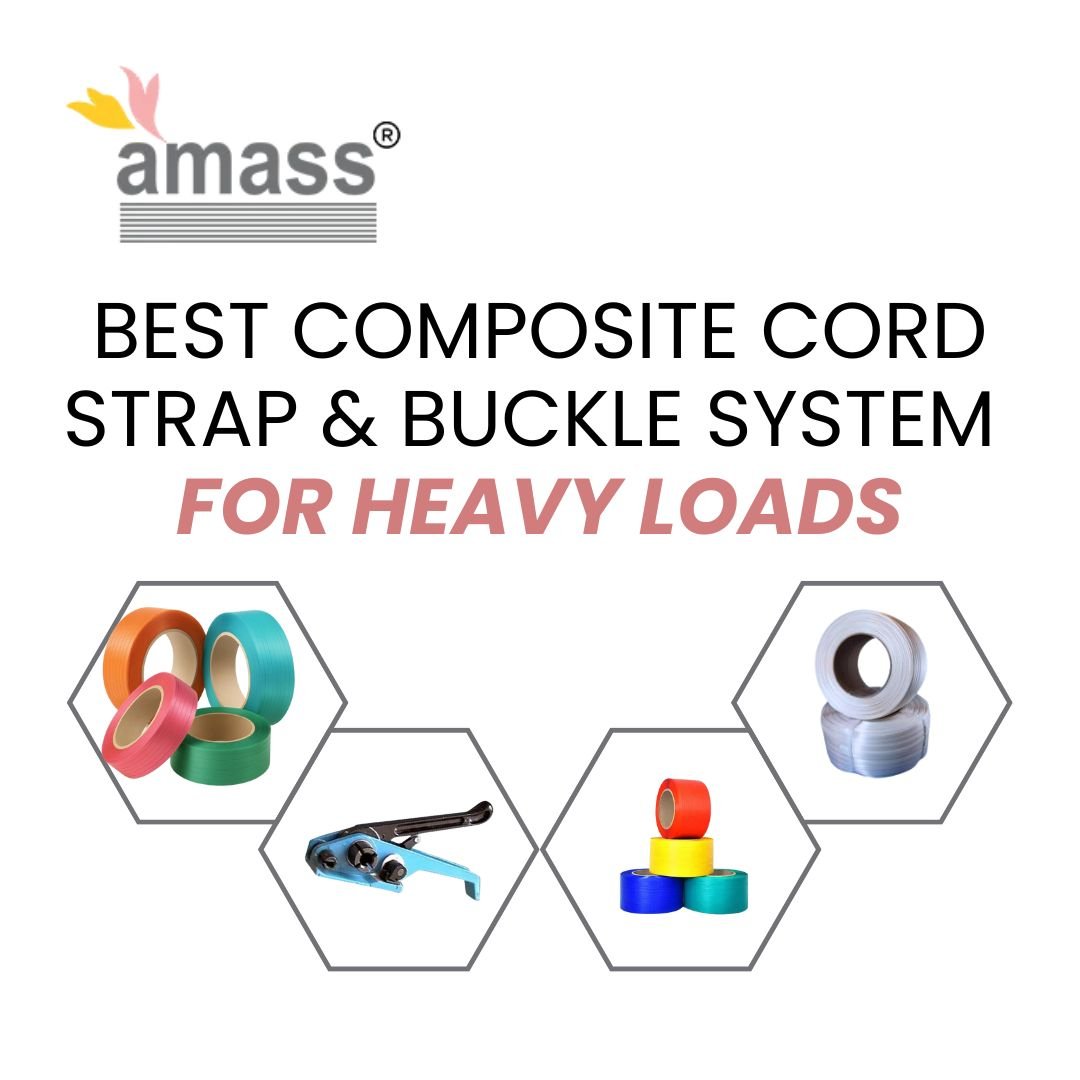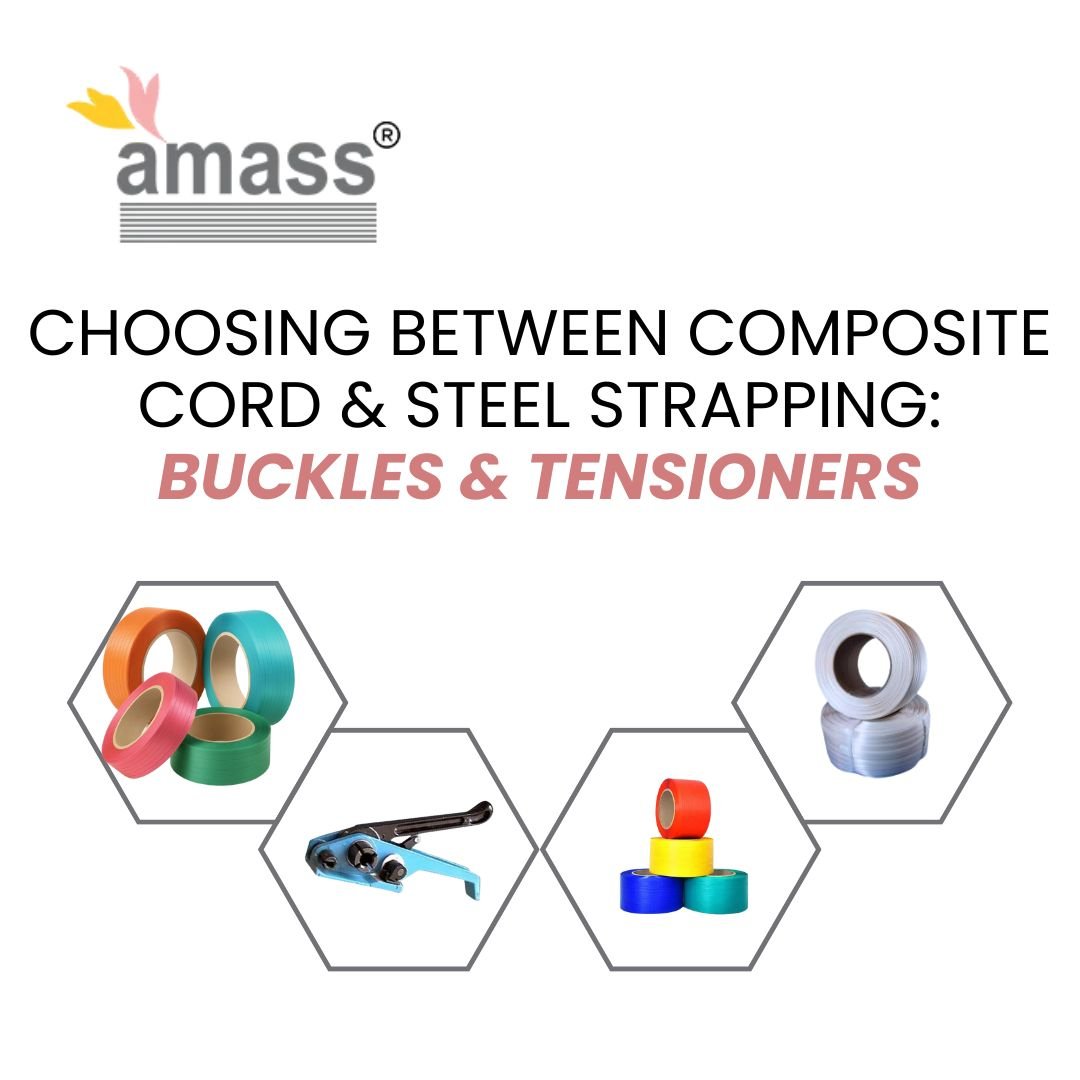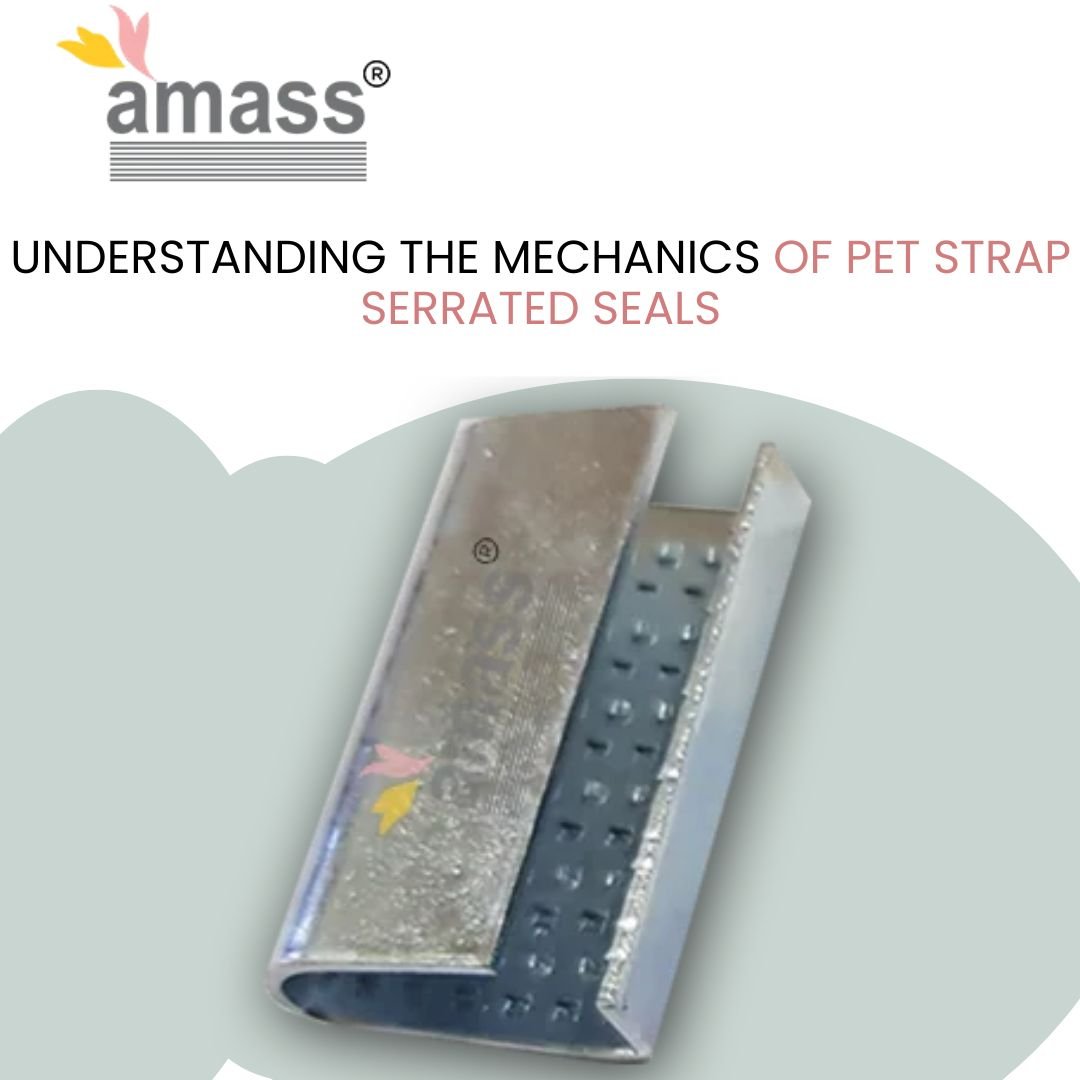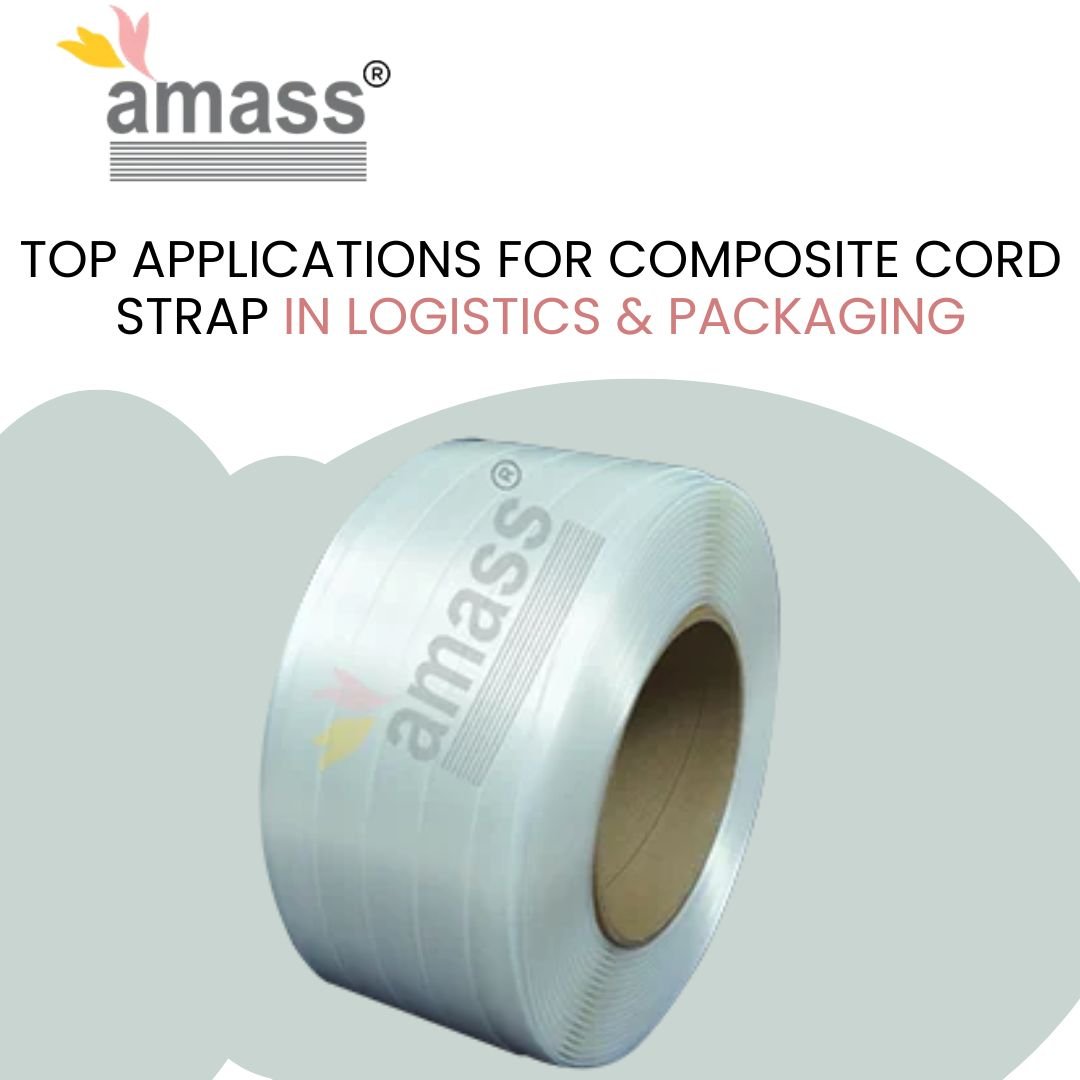Best Composite Cord Strap & Buckle System for Heavy Loads

Why Stainless Steel Buckles Are Ideal for Industrial Applications?
October 27, 2025
Choosing between Composite Cord & Steel Strapping: Buckles & Tensioners
November 12, 2025Introduction
Heavy load failures during transport cost logistics operations millions annually when buckles break, straps slip loose, or joints fail under stress. The problem isn’t strap weakness—it’s system weakness caused by mismatched buckle quality that reduces a 1,200 kg strap to 600 kg actual capacity. Buckle efficiency ranges from 75-95% depending on steel quality and forming precision, meaning your heavy load security depends more on buckle selection than strap strength. This article explains what differentiates high-performance buckle systems from weak alternatives, identifies the technical specifications that matter for loads exceeding 500 kg, and shows how to match strap-buckle combinations for maximum system breaking strength in export, construction, and industrial applications.
Understanding System Breaking Strength
Linear breaking strength measures the strap’s standalone tensile capacity without any joint closure. System breaking strength tests the complete assembly—strap plus buckle—under load until failure occurs. A 1,200 kg linear-rated strap paired with a weak buckle never achieves 1,200 kg system strength because the buckle fails first.
The joint closure represents the weakest link in any strapping system regardless of strap quality. Wire buckles provide stronger joints than heat seals or crimpers when properly manufactured from hard steel. The critical insight: you’re buying system strength, not strap strength.
Testing data reveals the performance gap. Composite straps with 13mm width show 290 kg linear strength but achieve 500 kg system strength with quality buckles—a 172% buckle efficiency. The 32mm width reaches 1,600 kg linear and 2,100 kg system strength when paired with heavy-duty galvanized steel buckles rated for maximum loads.
Critical Buckle Design Features
Material Composition
High-tensile galvanized steel forms the foundation of reliable buckles for heavy loads. The galvanization prevents corrosion during maritime shipping, outdoor storage, and multi-modal transport where moisture exposure would rust standard steel. Buckles manufactured from soft steel deform under tension, allowing legs to open upward instead of closing downward around the strap.
Hard steel buckles maintain structural integrity through the tensioning process. The legs close upon proper tension application, creating mechanical grip that prevents strap slippage during vibration and load shifts. Testing buckle quality requires simple observation—apply tension and watch whether legs close properly or deform.
Manufacturing Precision
Automated manufacturing plants produce buckles with uniform gap spacing and consistent finishing across every unit. This precision matters because irregular gaps create uneven load distribution that concentrates stress at specific points. Manual forming processes introduce variations that compromise system strength predictability.
Wire thickness determines base strength, but forming quality determines actual performance. Two 19mm buckles with identical wire diameter can deliver vastly different system strengths based on steel hardness and forming precision. Quality manufacturers control the complete production process rather than sourcing buckles from multiple suppliers.
Sizing and Load Capacity Matching
Standard Size Specifications
- 13mm buckles: 450-500 kg system strength for light industrial bundling
- 16mm buckles: 650-700 kg system strength for medium palletized loads
- 19mm buckles: 900-1,100 kg system strength for heavy construction materials
- 25mm buckles: 1,400-1,650 kg system strength for machinery and steel coils
- 32mm buckles: 2,000-2,600 kg system strength for extreme heavy-duty applications
The buckle width must match strap width exactly. Using undersized buckles leaves strap edges unsupported, while oversized buckles can’t close properly around narrower strapping. This dimensional compatibility directly affects how effectively the buckle grips the strap during tensioning.
Load Calculation Methods
Maximum Safety Load (MSL) runs at 50% of system breaking strength for operational reliability. A 19mm system rated at 1,100 kg breaking strength safely handles 550 kg working loads. Exceeding MSL creates failure risk from unexpected impacts, load settling, or vibration during transport.
Buckle efficiency calculation reveals quality differences: (Measured system strength ÷ 2 × Linear break strength) × 100%. Quality buckles achieve 75-95% efficiency, while cheap alternatives may deliver only 50-60% of theoretical system strength.
Performance Advantages Over Alternatives
Composite strap and buckle systems weigh 80% less than equivalent-strength steel strapping. This weight reduction lowers freight costs across thousands of annual shipments while maintaining security for loads from 500 kg to 2,500 kg. The polyester construction resists corrosion without maintenance, unlike steel that requires protective coatings or rusts during maritime exposure.
Shock absorption properties prevent load damage that rigid steel strapping transfers directly to cargo. The elastic elongation in composite straps maintains consistent tension even when loads settle or shift during multi-stop deliveries. This flexibility proves essential for bundling construction materials like timber that expand and contract with humidity changes.
Safety improvements matter in daily operations. Composite straps create no sharp edges or dangerous recoil when cut under tension. Workers handle strapping without protective equipment concerns required for steel applications. The buckle system allows retensioning during transit—a capability steel crimps and heat seals lack.
Optimal Heavy-Load Applications
Export Container Lashing
International shipping demands systems that withstand saltwater exposure, temperature extremes from -30°C to 140°C, and constant motion during weeks-long ocean voyages. The 25mm and 32mm systems secure crates, bundled steel products, machinery, and construction materials for container lashing. Galvanized buckles resist corrosion at ports where outdoor storage exposes cargo to weather before loading.
Construction Material Bundling
Steel rods, pipes, bricks, timber bundles, and concrete blocks require strapping that handles irregular shapes and outdoor storage conditions. The 19mm and 25mm systems provide sufficient strength while conforming to uneven load surfaces. Buckles rated for 900-1,650 kg system strength secure these materials through truck and rail transport where vibration tests joint integrity.
Industrial Machinery Securing
Equipment manufacturers strap engines, automotive components, and metal fabrications during domestic and export shipping. The 32mm heavy-duty system handles loads exceeding 1,500 kg with 2,100-2,600 kg breaking strength. This capacity supports precision machinery requiring damage-free securing that doesn’t mark surfaces or transfer impact forces to sensitive components.
Agricultural and Forestry Products
Log bundles, lumber stacks, and hay bales experience outdoor storage and moisture exposure that corrodes steel alternatives. Composite systems maintain strength through rain, snow, and UV exposure without degradation. The flexibility accommodates dimensional changes as wood dries or organic materials settle during storage.
Application Best Practices
Tensioning Protocol
- Thread strap through buckle with 4-6 inches overlap extending past the buckleyoutube
- Apply tension using manual or pneumatic tools until buckle legs begin closing
- Continue tensioning until coating peels inside the buckle—the visual indicator of proper tension
- Observe buckle legs closing downward around the strap rather than opening upward
- Cut excess strap tail leaving 2-3 inches beyond buckle for grip retentionyoutube
Over-tensioning beyond the coating peel point reduces shock absorption capacity without improving joint strength. Under-tensioning allows gradual loosening as loads settle during transport. Proper technique achieves the system’s rated breaking strength reliably.
Inspection Requirements
Visual checks before each application identify damaged buckles with deformed legs, rust spots, or irregular gaps. Reject buckles showing any structural compromise—the small material cost doesn’t justify cargo damage risk. Strap inspection covers coating peeling outside buckle areas, visible fiber separation, and discoloration indicating chemical or heat exposure.
Monthly tool calibration maintains consistent tensioning pressure across applications. Tools operating below specified pressure produce weak joints even with correct strap-buckle combinations. Daily cleaning removes accumulated debris from tensioner feed wheels and cutting blades.
Common Selection Mistakes
Purchasing straps and buckles from different suppliers without system strength certification creates dangerous mismatches. One operation paid 56% more per roll and 35% extra for buckles compared to integrated systems, yet achieved weaker joints prone to failure. The packaging indicated 1,000 kg strength, but actual testing revealed significantly lower performance.
Accepting linear strength certificates without system strength documentation masks buckle quality issues. Manufacturers controlling complete production processes provide certified system strength data from independent testing agencies. Suppliers showing only linear strength certificates often source cheap buckles that compromise the entire system.
Prioritizing lowest price over certified quality costs more through cargo damage claims and customer complaints from loosened packages. Quality buckles manufactured from hard galvanized steel with precision forming deliver reliable performance across thousands of applications. The upfront cost difference represents a fraction of potential damage from single system failure.
FAQs
What’s the difference between linear and system breaking strength?
Linear breaking strength measures the strap alone without any joint closure, while system breaking strength tests the complete strap-buckle assembly under load until failure. System strength typically ranges from 75-95% of linear strength depending on buckle quality. A 1,200 kg linear-rated strap with poor buckles may achieve only 600-800 kg system strength, making the buckle selection more critical than strap specification.
How do I verify buckle quality without laboratory testing?
Apply tension to a strap with buckle attached and observe the buckle legs. Quality hard-steel buckles close downward around the strap during tensioning, while cheap soft-steel alternatives deform with legs opening upward. Request certified system strength documentation from independent testing agencies rather than supplier-provided linear strength data. Manufacturers controlling complete production processes typically provide reliable certifications.
Which size combination works for loads between 800-1000 kg?
The 19mm strap-buckle system rated at 900-1,100 kg system breaking strength handles this load range with proper 50% safety margin. Calculate Maximum Safety Load at half the system strength—a 1,100 kg rated system safely carries 550 kg working loads. For loads consistently near 1,000 kg, consider the 25mm system rated at 1,400-1,650 kg to maintain adequate safety margins.
Can composite strap-buckle systems replace steel for all heavy-load applications?
Composite systems handle most applications from 500 kg to 2,500 kg effectively while offering weight savings, corrosion resistance, and shock absorption benefits. Steel remains necessary only for extremely hot loads above 140°C or cargo with sharp edges that might cut polyester fibers. For standard heavy-load securing without those specific conditions, composite systems deliver equal or superior performance at lower total cost.
Why do some buckles cost significantly more than others?
Manufacturing quality separates premium from cheap buckles—hard galvanized steel costs more than soft wire, automated precision forming requires capital investment versus manual processes, and certified system strength testing adds expense. The price difference reflects steel quality, forming consistency, and reliable performance across thousands of applications. Operations experiencing strap breakage with cheap buckles often discover they’re paying more per unit while receiving inferior system strength.
Conclusion
System breaking strength determines heavy load security, not strap specifications alone. Quality buckles manufactured from hard galvanized steel with precision forming deliver 75-95% buckle efficiency, while cheap alternatives compromise even premium straps to 50-60% rated capacity. The 13mm through 32mm size range covers applications from 450 kg to 2,600 kg system strength when properly matched and tensioned. Integrated systems from manufacturers controlling complete production processes provide certified reliability that mixed-source combinations cannot guarantee.
Request certified system strength documentation for your specific heavy load requirements.
Amass Strap engineers complete composite cord strap and buckle systems with documented system breaking strengths from 500 kg through 2,600 kg. Our buckles are manufactured from heavy-duty galvanized high-tensile steel using automated precision forming equipment that ensures uniform gap spacing and consistent performance across every unit. Available sizes include 13mm, 16mm, 19mm, 25mm, and 32mm widths, each paired with matching straps tested to certified system strength specifications by independent agencies. We control the entire manufacturing process from raw material selection through final testing, guaranteeing integrated system reliability rather than mixed-component uncertainties.
Visit amass-strap.com to download our system strength certification documents showing tested breaking strengths for each strap-buckle combination, request sample systems for on-site load testing with your actual cargo types, or schedule a technical consultation where our engineers analyze your specific heavy load securing requirements, calculate proper safety margins, and recommend optimized strap-buckle specifications that deliver certified performance for your export, construction, or industrial packaging operations.




